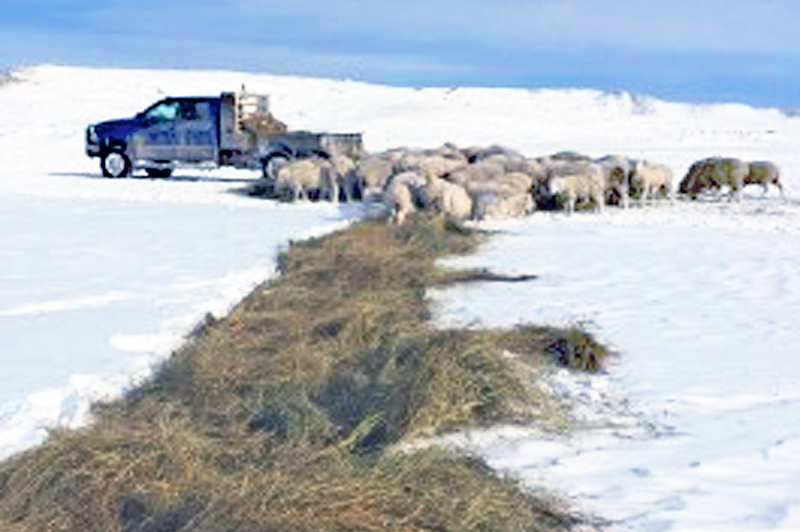Coutesy Photo
By Colleen Acres
AgriNews Contributor
The trend toward bale grazing to feed sheep flocks is one that many producers may not be familiar with. Although it is not a practice that we have direct experience with on our farm operation, it may be a good fit for some and should be explored.
From the research, and experiences of producers I have consulted, there are many advantages and disadvantages that should be weighed to decide if this is an option that might work for you. “Why” and “how” are two of the main questions to explore but as with most things in life, you will never truly know if it is a good fit until you try it.
Why? Bale grazing is used to increase convenience and reduce the cost of providing winter feed. Some other reasons may include reduced yardage costs including the need for spreading manure, improved pasture and improved wool cleanliness.
How? Round bales work best because they can be rolled out for the flock. Limit the amount of feed to that which the flock will consume on a daily basis. This may involve e some trial and error. Roll good quality hay out on a fresh area every couple of days, working your way across the field to spread the remnants evenly and reduce the need for cleaning up piles come spring. Better quality hay and limited amounts improve consumption and reduce waste. Some operations set the bales out in the field in early winter so they do not have to deliver if they do not own the necessary equipment. Removing twine and unrolling occurs as needed as the flock is moved across the field.
The research recommends one round bale for ten cows. Anecdotal recommendations for sheep state one bale for thirty sheep, but this varies a great deal between hard versus soft core bales, weather/temperature, age and stage of production for sheep (ewe lambs vs mature ewes). Again, you would have to experiment and adjust accordingly.
Many operations use electric net fence to confine the flock to one feeding area. This, to me (once again, I have no direct experience) would be the biggest struggle, as moving the fence and pounding stakes with a rubber mallet into frozen ground or lifting net out of snow/ice would be a struggle. Realize that mud and feed do not mix, so if and when things turn mild and the ground is soft and muddy, you will need an alternate plan. High, rolling hills work well for this system, and flat and low areas can be used once the ground is hard and snow covered.
Improved soil health and pasture forage quality are benefits many using bale grazing practices have experienced. The research has demonstrated that there are benefits to the subsequent growing season’s forage production resulting from the distribution of nutrients from manure, urine, and unconsumed hay when compared to an area where bale grazing had not occurred. Some producers however, have needed to reseed their winter feeding area after bale grazing, so this possibility should be taken into consideration along with options available for other fields to be used for spring grazing should reseeding be required.
Always consider predation and have a plan to manage this risk whether it’s using guardian dogs, llamas, donkeys and/or fencing.
Add convenience and reduce costs associated with winter feeding – give bale grazing a try, but first talk to others who have done it to learn from their experience.













